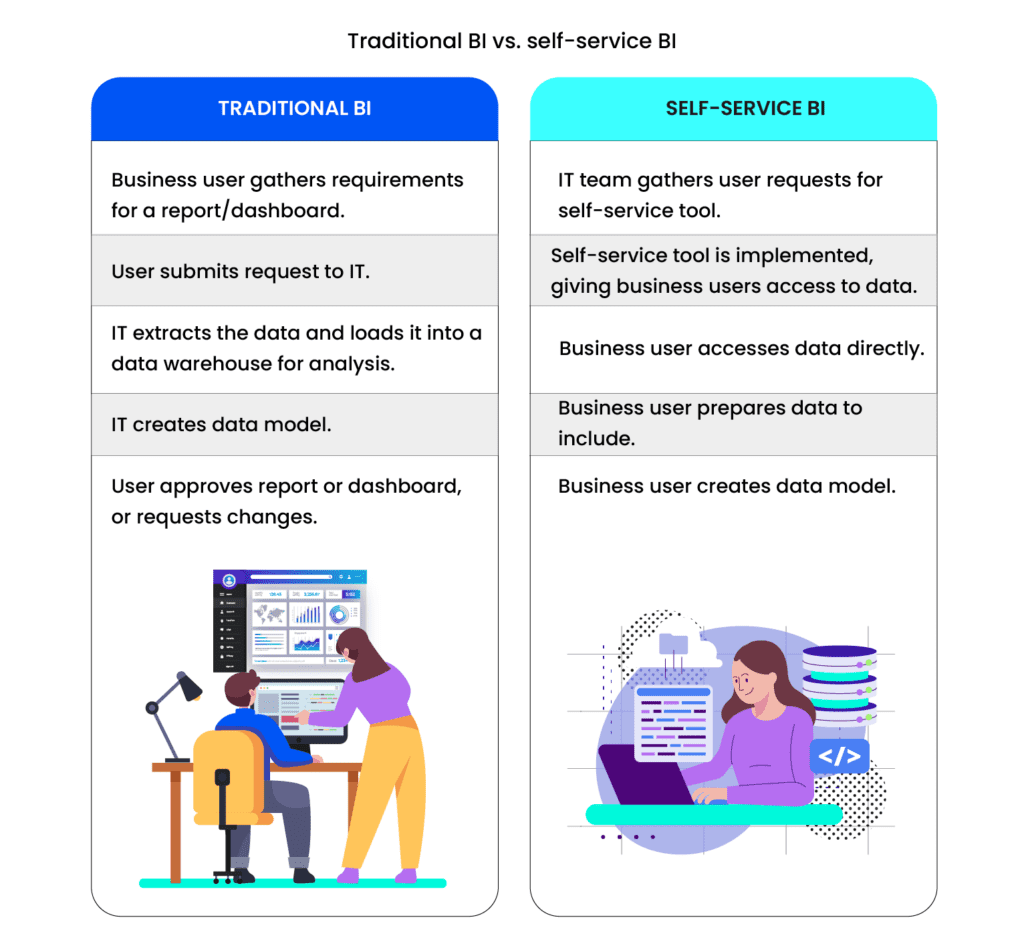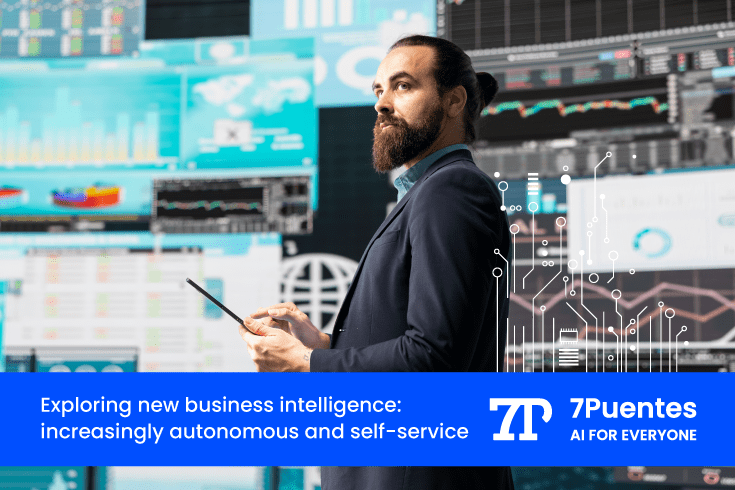This post reveals how the evolution toward increasingly autonomous and self-service BI is democratizing access to business intelligence, allowing curiosity and intuition to drive strategy at every level of your organization.
Business intelligence (BI) is advancing at an unstoppable pace, and each innovation is redefining how companies manage, interpret, and use data. Far from being a tool of the future, BI is already a fundamental part of optimizing decisions and improving business performance. From predictive analytics to the use of artificial intelligence, organizations are adopting more agile and accurate solutions that directly impact their success.
Explore the key trends shaping BI implementation in this blog post, focusing on more autonomous, AI-driven, real-time, mobile, and accessible from anywhere, self-service business intelligence.
The era in which BI was the exclusive domain of technical experts is clearly over. Today, truly thriving companies empower every user to explore their data, discover insights, and make agile decisions, without intermediaries.
These innovations not only transform the technological landscape but also usher in a new era of informed decision-making, democratization of data analysis in companies, and business competitiveness.
Current Trends in Increasingly Autonomous BI
1. Real-Time BI and Automated Decision-Making
The need for up-to-date information will continue to be a priority for businesses. BI solutions are evolving toward platforms that enable real-time analysis, facilitating agile and accurate decision-making.
2. AI and Machine Learning
Artificial intelligence and machine learning will enhance BI by automating data analysis and detecting patterns that traditional analysts would miss. This will reduce time and improve the accuracy of insight generation.
3. Predictive and Prescriptive Analytics
Predictive data analytics will allow businesses to anticipate market needs, while prescriptive analytics will recommend concrete actions to optimize results. This combination will be key to staying competitive.
4. Mobile BI and Access from Anywhere
With the rise of remote work and hybrid environments, BI tools will need to adapt to provide easy and secure access from mobile devices. This will ensure that decision-makers have critical information anytime, anywhere.
5. Data Privacy and Governance
Data security and privacy will remain a key concern. BI solutions must ensure regulatory compliance and offer robust systems to protect corporate and personal information.
6. Self-Service BI: The Democratization of Data Analysis
Empowering non-technical users to perform data analysis autonomously will be a critical aspect. Self-service BI tools will continue to improve their accessibility and ease of use, allowing more people within organizations to harness the potential of business intelligence.
BI with AI and Self-Service Tools
Currently, both AI and self-service BI are radically transforming the way we access key business information.
In the case of AI, we can mention Natural Language Processing (NLP) technologies that allow queries to be made in plain language. This means that a marketing manager, sales leader, or any other business user can now simply type a question as if asking a colleague and obtain relevant information.
At the same time, AI algorithms excel at pattern recognition, analyzing historical data to identify trends that humans might miss, for example regarding market movements, customer behavior, and inventory needs.
The chart below shows the differences between traditional BI and BI that strategically incorporates AI.

Regarding self-service BI capabilities, it is clear that they make it easier for employees, from executives to frontline workers, to derive useful business insights from the data collected in BI systems. The primary goal is to drive more informed, data-centric decision-making that generates positive business outcomes, such as increased efficiency, greater customer satisfaction, and increased revenue and profits.
Clearly, extensive technical knowledge is not required to work with these data analytics tools, but it does require the user to have the necessary business knowledge and experience to know what questions to ask and to have the appropriate technical support and tools. They must also know how to act on the answers and, perhaps most importantly, what questions to ask next, especially in an environment guided by AI agents and generative AI.
The following comparison chart shows the differences between traditional BI and self-service BI.

What are the benefits of self-service BI? Better use of BI resources; faster data analysis and decision-making; a fully data-driven organization and culture; a single source of truth (a well-structured self-service BI environment that unifies verified source data and offers analysis standards that everyone can adopt); and competitive advantages. Expanded data usage and accelerated decision-making increase an organization’s agility, helping it create or maintain a competitive advantage in the market. This is especially true if it uses more self-service and autonomous BI tools than its competitors.
At 7Puentes, we are leaders in providing tailored solutions based on artificial intelligence and machine learning for our clients. We believe that AI can transform any organization, regardless of its maturity, creating real value and optimizing existing processes to make better, data-driven decisions.

